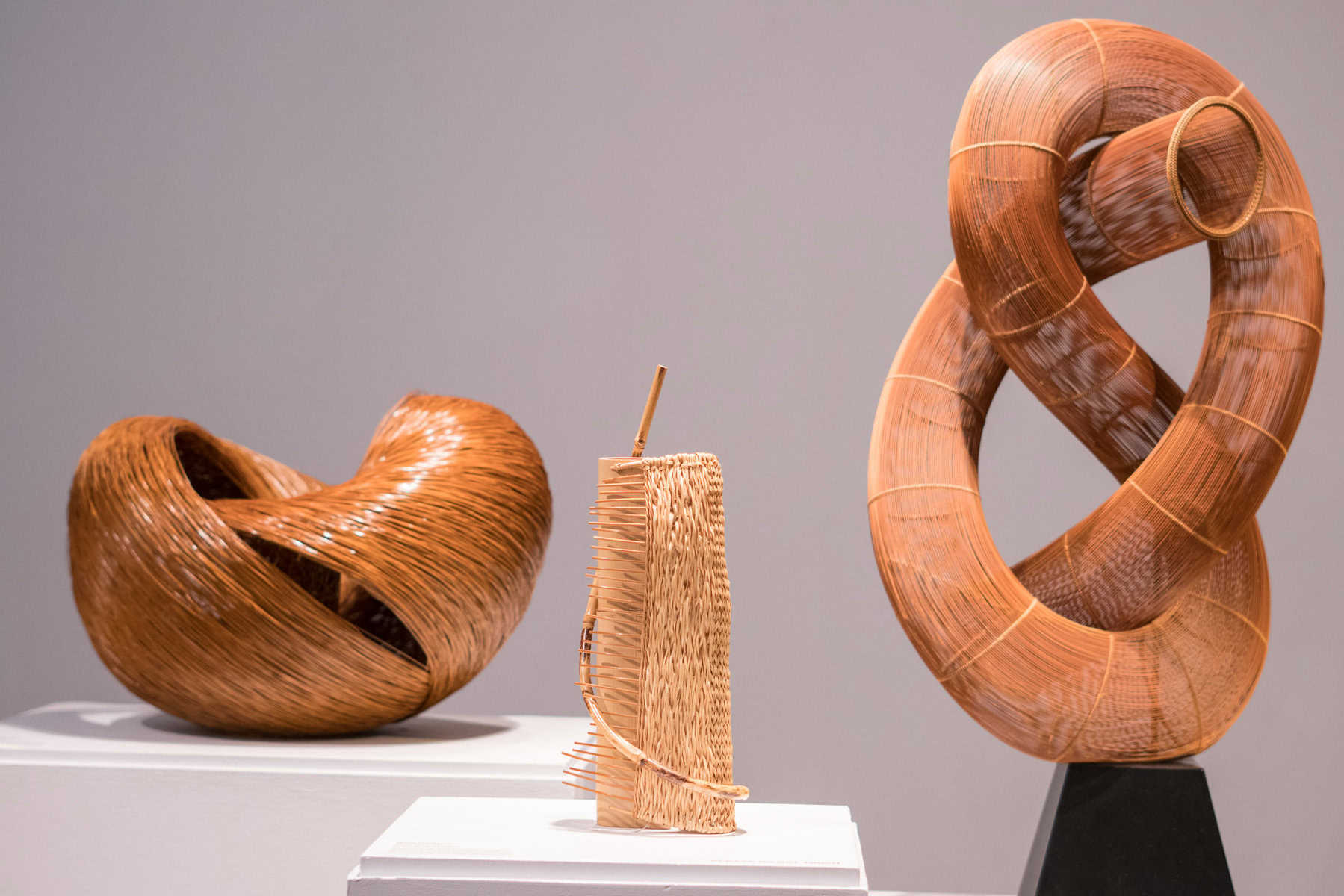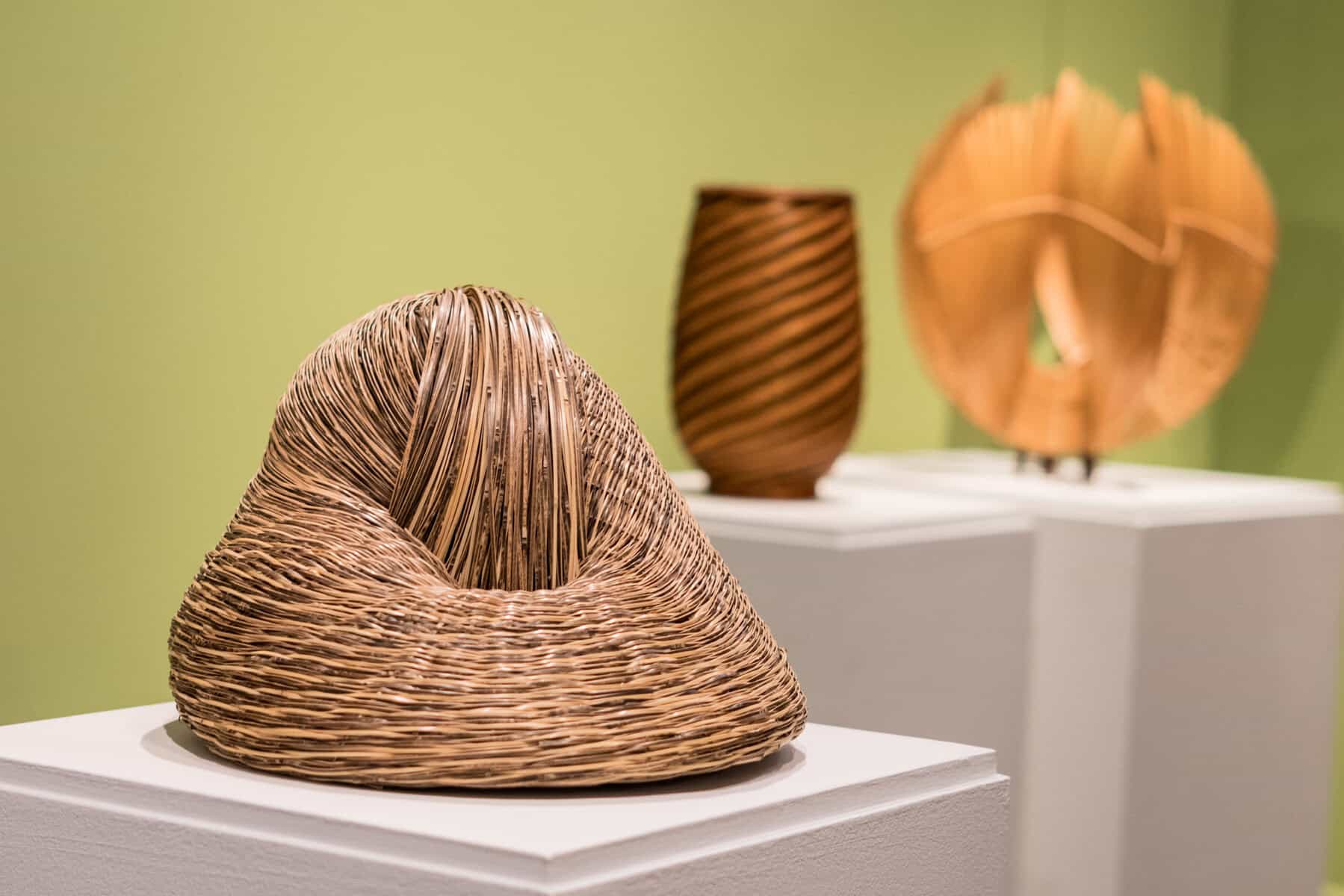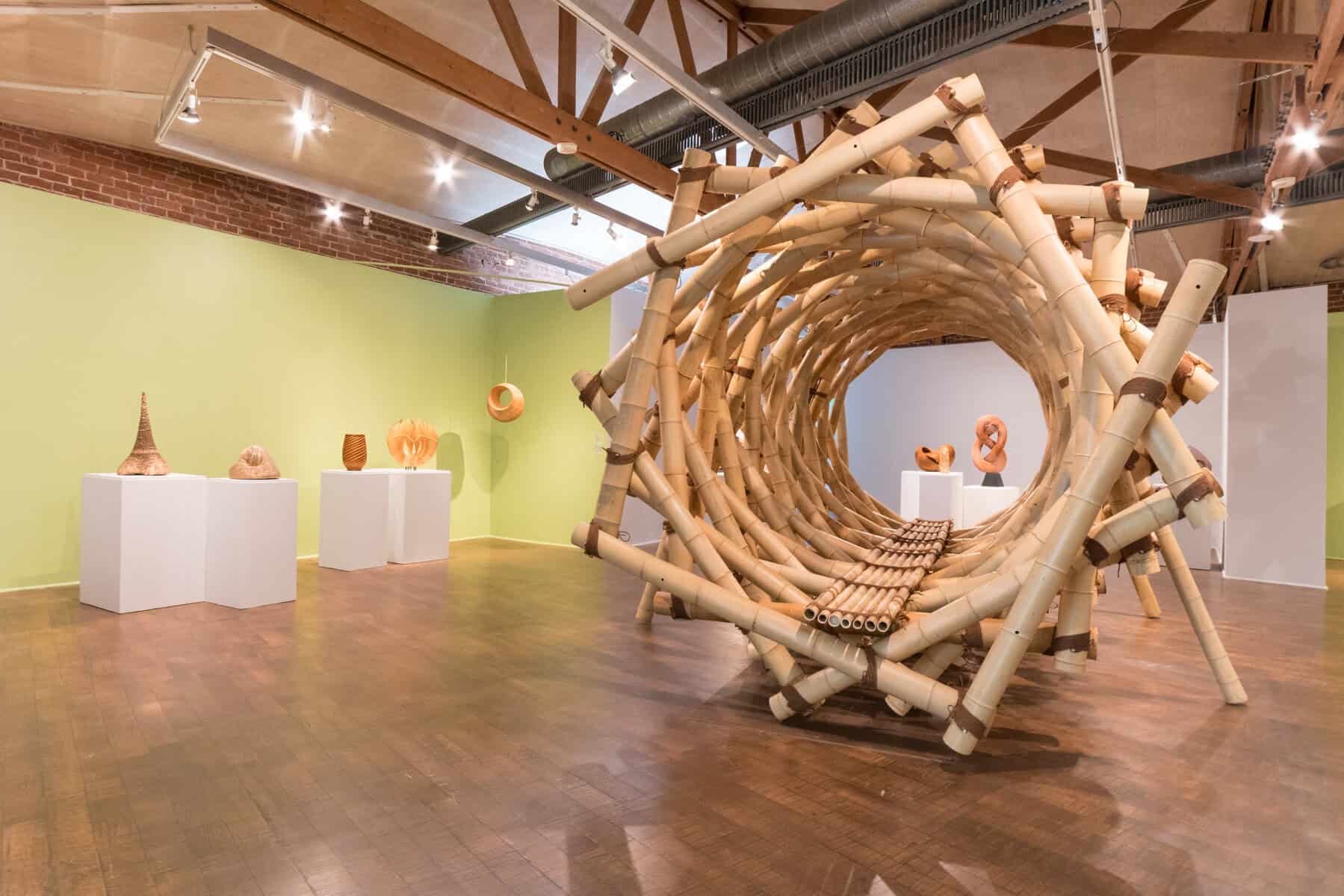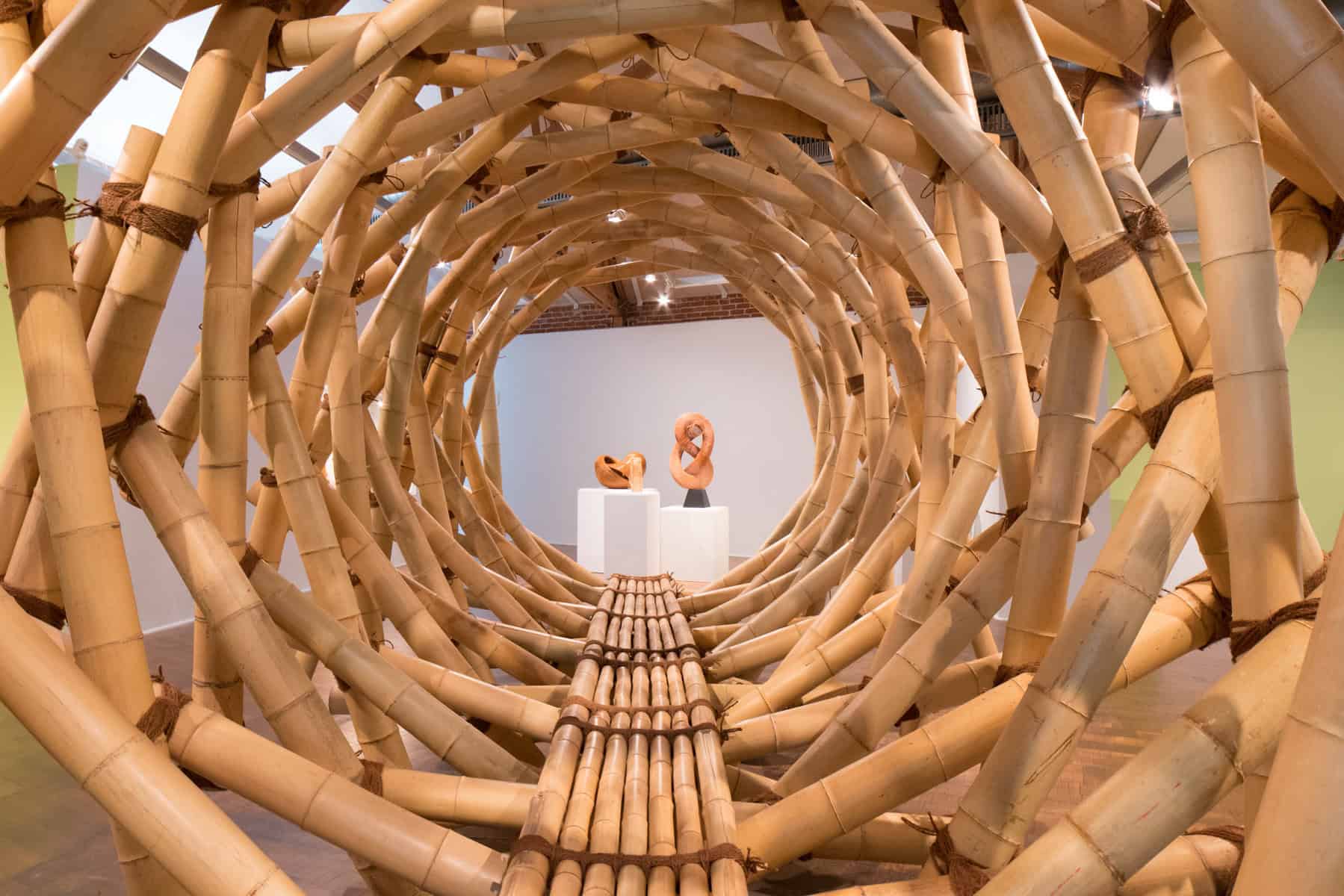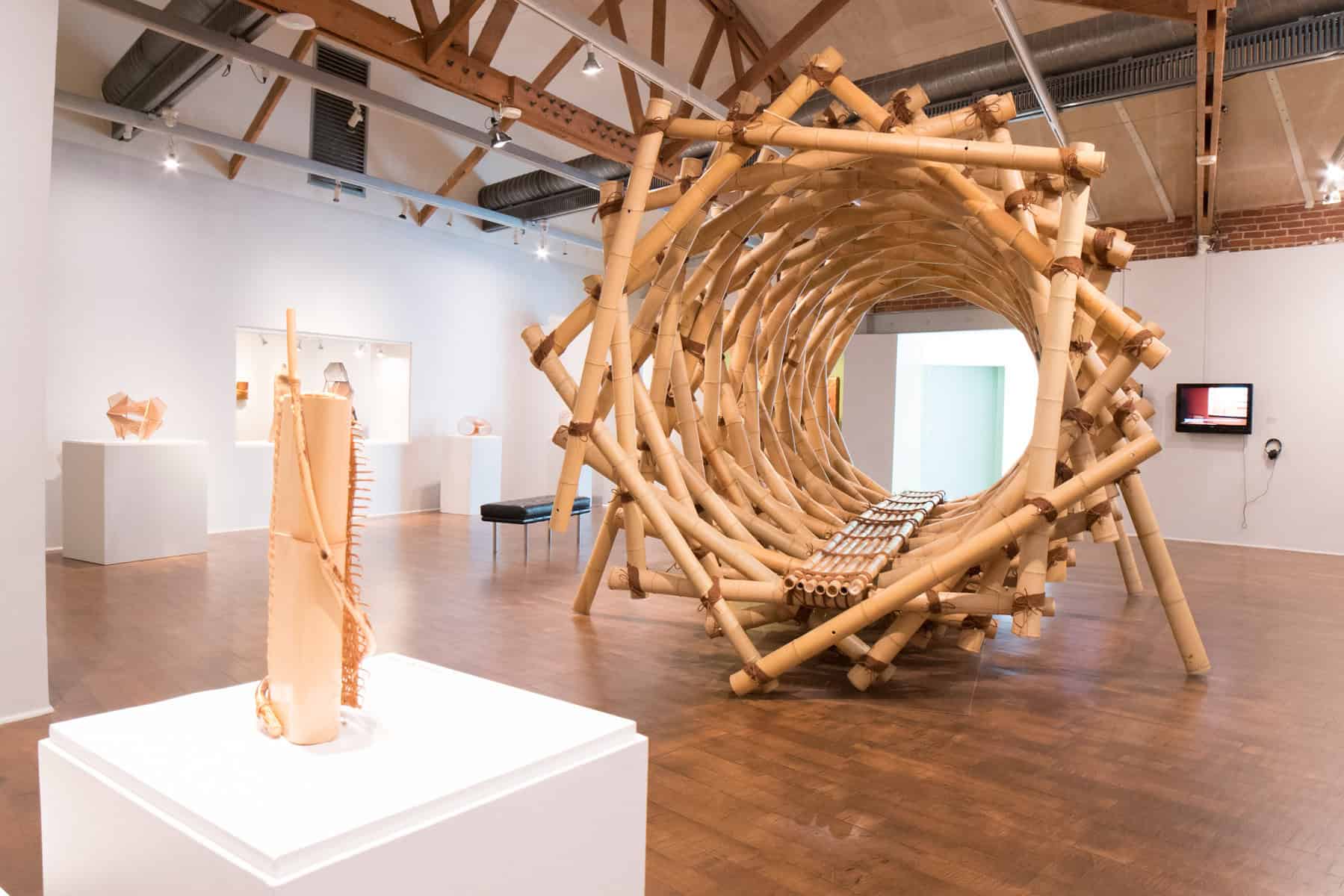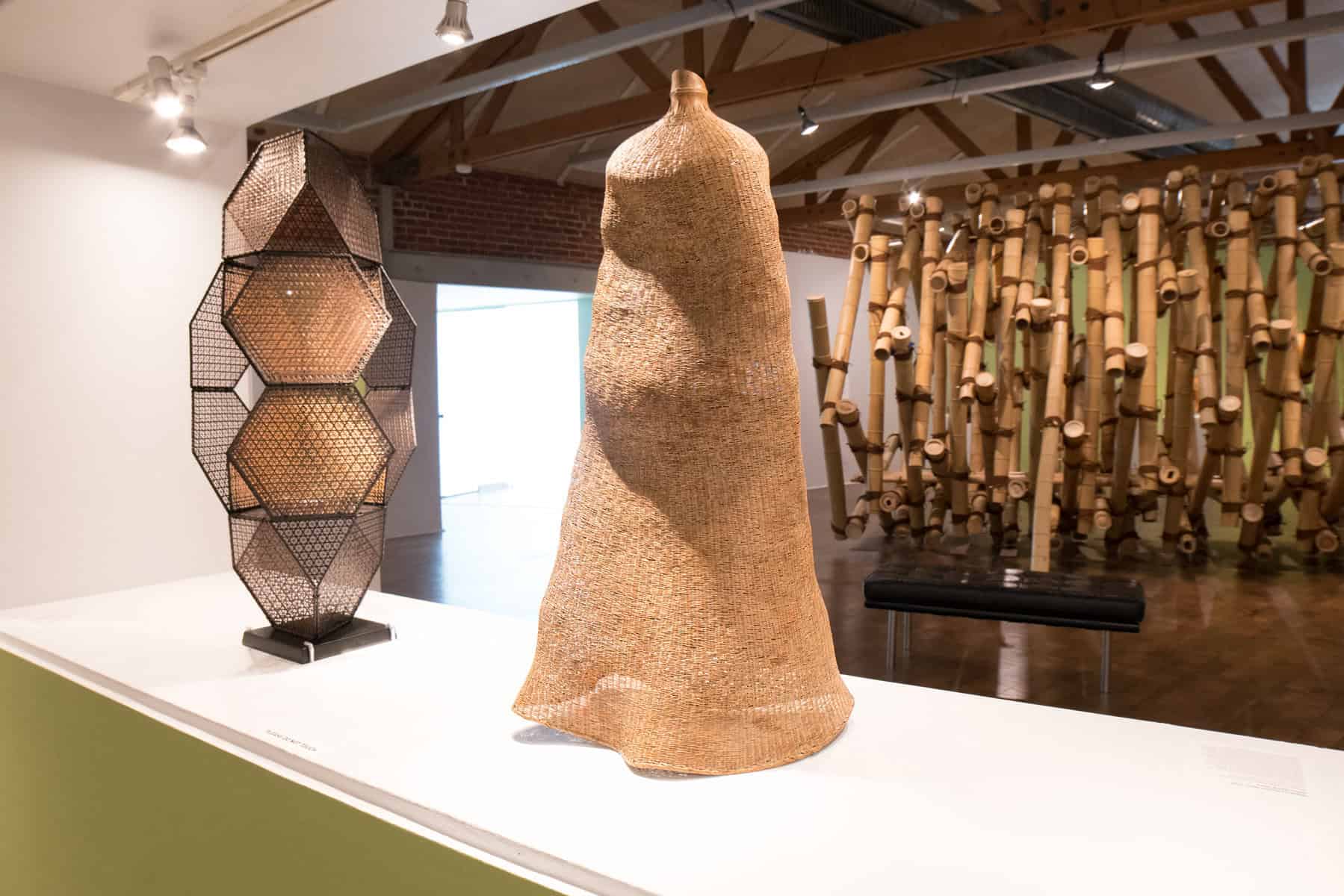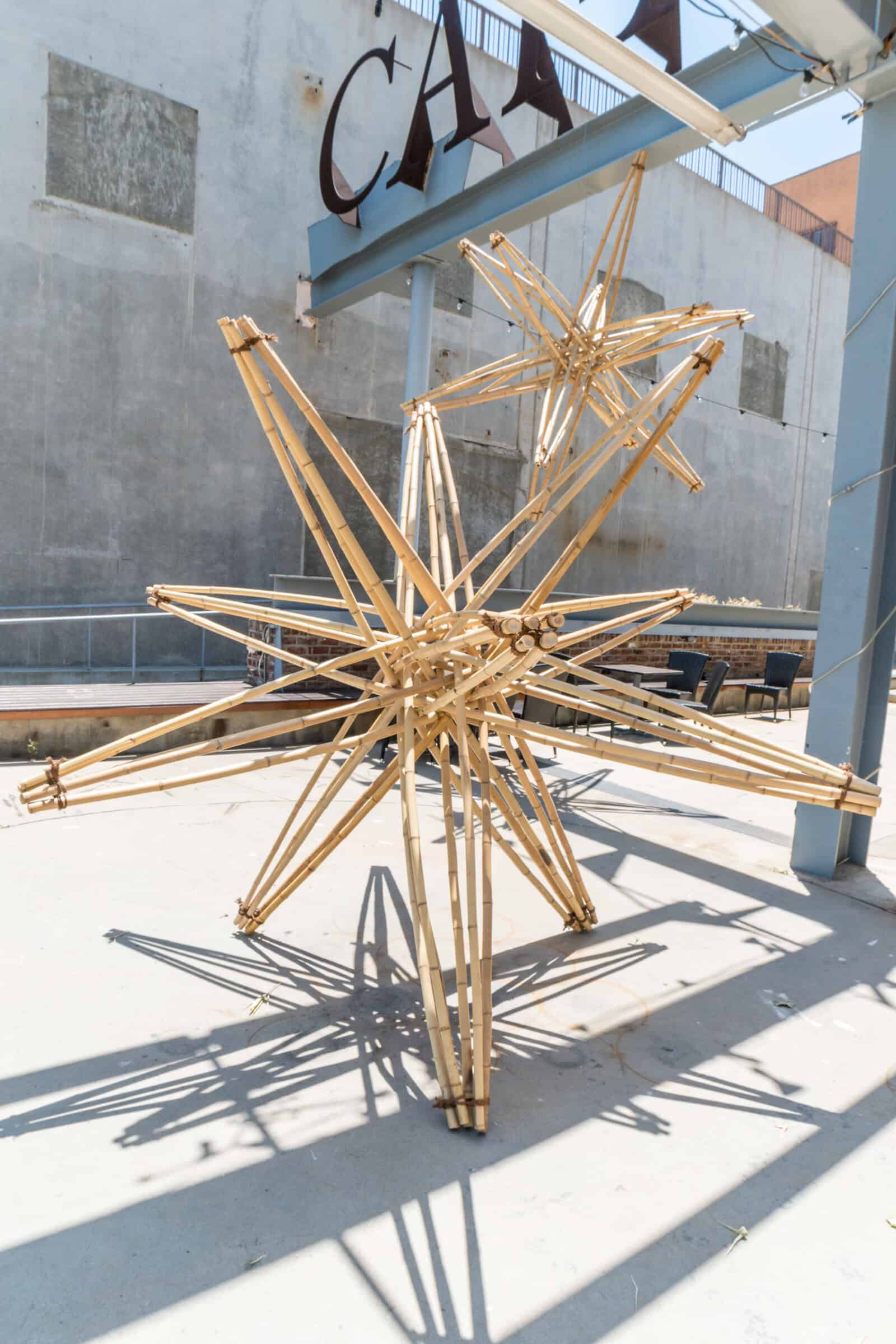Bamboo
May 27, 2018 — September 9, 2018
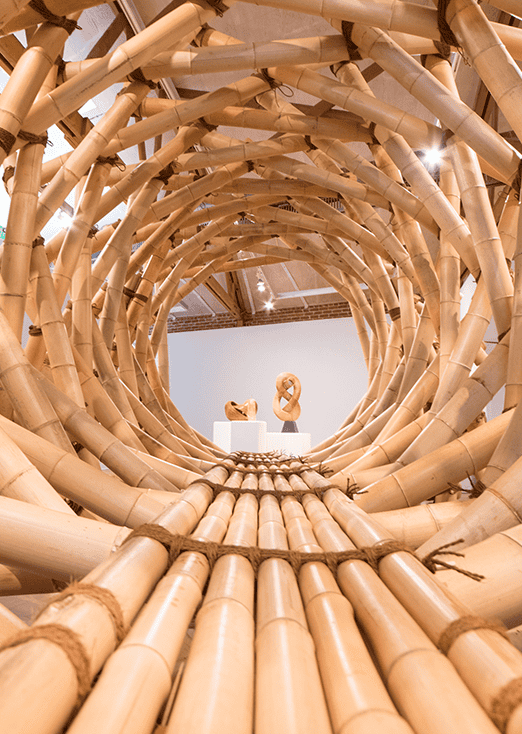
Bamboo is one of the fastest growing plants in nature. It has a tensile strength comparable to steel and is an incredibly versatile and enduring building material. For centuries, bamboo has been an important cultural and economic resource in Japan. It has played an essential role in Japan’s artistic heritage, and Japanese bamboo baskets are among its most revered traditions.
Japanese bamboo baskets (hanakago) are traditionally associated with the tea ceremony, which was adapted from China and developed in Japan during its medieval period (1185-1573 CE). Baskets were used as containers for ikebana flower arrangements, serving dishes for sweets, and containers for charcoal. Early Japanese shapes and weaves were heavily influenced by Chinese tea ceremony baskets. By the mid-nineteenth century, a distinctly Japanese aesthetic developed, incorporating a variety of plaiting or weaving techniques and emphasizing simplicity, asymmetry, and an appreciation for nature and organic processes. Bamboo artists typically maintained their own bamboo forests and were usually involved in all aspects of basket production—from harvesting, drying, and splitting the bamboo to the construction of the form.
Dramatic shifts in Japanese bamboo artistry developed after World War II. Fueled by a decline in demand for tea ceremony objects, bamboo artists expanded their repertoire to purely sculptural forms that explored individual expression and augmented scale. Within the last two decades, a small group of female bamboo artists have established themselves in this historically male-dominated field. Recent years have also seen a growing number of Japanese artists utilizing bamboo for large-scale installations. Artists like Akio Hizume, whose Fibonacci Tunnel moves through the exhibition, merge bamboo’s history as a building material and an artistic medium to create new ways to experience the material. Recent decades have also seen the development of international collections of Japanese bamboo art, which helped bring wider recognition to the art form. The Los Angeles-based Cotsen Collection was the first significant bamboo basket collection outside Japan, and works from that collection form the foundation of this exhibition.
Today, Japanese bamboo artists are still intimately tied to the material, with most artists maintaining the practice of growing and harvesting the bamboo they utilize. These artists understand the material and its potential. Through their dedication and innovation, the art form continues to live and evolve.
Exhibition Artists: Akio Hizume, Higashi Takesonosai, Honda Shōryū, Honma Hideaki, Honma Kazuaki, Iizuka Rokansai, Fujinuma Noboru, Fujitsuka Shōsei, Kajiwara Aya, Kawashima Shigeo, Maeda Chikubōsai I, Maeda Chikubōsai II, Monden Kōgyoku, Nagakura Kenichi, Nakamura Tomonori, Shōno Shōunsai, Shōno Tokuzō, Tanabe Chikuunsai I, Tanabe Chikuunsai IV, Tanabe Mitsuko, Ueno Masao, Yako Hodo, and Yamaguchi Ryuun.
Organized by Holly Jerger and Lyssa Stapleton
This exhibition is supported by Japan Foundation, Los Angeles, with additional support from the Pasadena Art Alliance and the Cotsen Foundation for Academic Research. In-kind support provided by Backyard X-Scapes. Special thanks to originating curator, Marcello Dantas, and JAPAN HOUSE São Paulo for their assistance in initiating this exhibition. The museum would also like to thank Stephanie Jackson and all the volunteers who assisted with the exhibition.
Exhibition Photography: Farah Sosa
